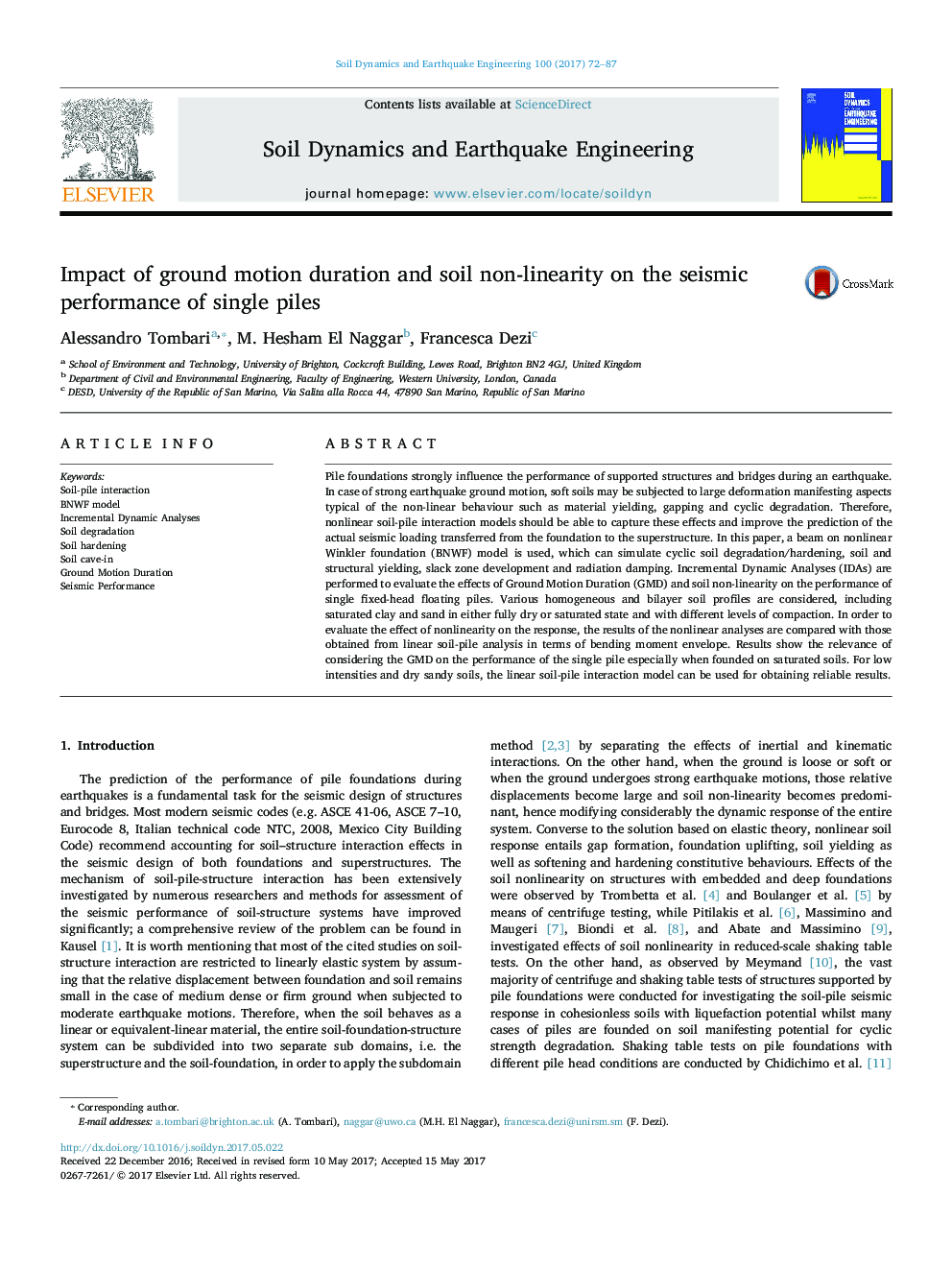| Article ID | Journal | Published Year | Pages | File Type |
|---|---|---|---|---|
| 4927010 | Soil Dynamics and Earthquake Engineering | 2017 | 16 Pages |
Abstract
Pile foundations strongly influence the performance of supported structures and bridges during an earthquake. In case of strong earthquake ground motion, soft soils may be subjected to large deformation manifesting aspects typical of the non-linear behaviour such as material yielding, gapping and cyclic degradation. Therefore, nonlinear soil-pile interaction models should be able to capture these effects and improve the prediction of the actual seismic loading transferred from the foundation to the superstructure. In this paper, a beam on nonlinear Winkler foundation (BNWF) model is used, which can simulate cyclic soil degradation/hardening, soil and structural yielding, slack zone development and radiation damping. Incremental Dynamic Analyses (IDAs) are performed to evaluate the effects of Ground Motion Duration (GMD) and soil non-linearity on the performance of single fixed-head floating piles. Various homogeneous and bilayer soil profiles are considered, including saturated clay and sand in either fully dry or saturated state and with different levels of compaction. In order to evaluate the effect of nonlinearity on the response, the results of the nonlinear analyses are compared with those obtained from linear soil-pile analysis in terms of bending moment envelope. Results show the relevance of considering the GMD on the performance of the single pile especially when founded on saturated soils. For low intensities and dry sandy soils, the linear soil-pile interaction model can be used for obtaining reliable results.
Related Topics
Physical Sciences and Engineering
Earth and Planetary Sciences
Geotechnical Engineering and Engineering Geology
Authors
Alessandro Tombari, M. Hesham El Naggar, Francesca Dezi,
